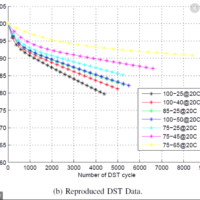For those getting ready to try this conversion, I made some measurements today. I hooked ups an ammeter in line with my Ridgid 18V 2AH battery, and checked the current draw on my Garmin 73SV with the ice kit. Since the voltage of the battery will drop from the 20.2V I measured down to somewhere around 15-16V when the battery cuts out to protect itself, I assume the current will go up to compensate. From reading, the cells in these batteries should not be discharged below 3V, and there are 5 of them, so I set my voltage alarm at 16V (3.2×5) until I am sure that the battery has the means to protect itself. The voltage drops pretty fast at the end, so I don’t feel like that loses much.
Powered on, sonar off, I get .27A at 100% brightness, .16A at 60%, which is what I use.
Sonar on, the readings fluctuate, but I get .29-.33A at 100% brightness, .17-.25A at 60%.
I used this setup yesterday, and stopped at about 5 hours of life and 17.7V at 100% brightness. I still had 2 bars on the battery. I think by running lower screen brightness and letting the battery voltage go lower, I can almost get 1 day out of this setup. Gives me something to do with batteries that are too small to run the auger.




